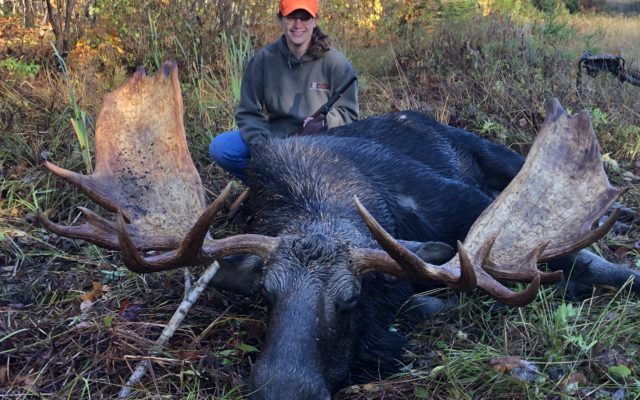
5 things hunters need to know to successfully find a moose
By Pete Warner, Bangor Daily News Staff
Nobody in Maine puts his hands on more moose during the course of a year than Lee Kantar.
As the moose biologist for the Maine Department of Inland Fisheries and Wildlife, he not only spends countless hours in the woods but mans some of the busiest game registration stations during the fall hunting season.
Kantar heads the state’s management efforts for moose, including overseeing its Adaptive Moose Hunt program that is trying to improve the health of moose by reducing the population of winter ticks. That means he knows his stuff.
Here are five key things Kantar said moose hunters should be looking for as they head afield in search of the state’s largest game animal beginning next week.
Fresh sign (tracks, pellet groups)
What is fresh? Most hunters can identify whether a track has been made in the last few days or is much older. Understanding what the weather has been over the last week is critical to determining the age of the track. Lots of sun, rain, dry weather or humidity will dictate how quickly tracks fade into the ground.
Moose pellets are similarly influenced by weather, but can show what the moose is eating during the time of the year. In summer moose eat aquatic vegetation and pellets can sometimes look like “cow patties.”
As moose spend more time stripping leaves and feeding on tree/shrub buds, pellets are formed. Do the pellets look dark and wet (fresh), or are they starting to dry out? Kick the pile over, what does the ground look like beneath?
Browsing/habitat
Moose rely heavily on young forest growth — regenerating trees and shrubs that are as big as your thumb to the size of your arm. Areas where these trees and shrubs can be found are dense, so that from the ground it is difficult to see far through them, and they are 4 to 15 feet tall.
When it comes to hardwood regeneration, moose especially enjoy maples, but willow, aspen, birch, cherry and ash will do, too. They will eat shrubs like hobblebush, other viburnums and hazelnut.
Look for regenerating trees and shrubs that have been bitten off, with twigs looking squared and torn off. Where the moose pulls off the twig will look more white/light in color than dark. As time goes on and the torn twig dries out it will appear darker.
Moose will feed on the same plant, biting off multiple twig ends, and return year after year to create a “clubbing” effect on the plant.
Other signs include thrashing of vegetation. Hunters who walk out on wooded roads may see evidence of moose battling alders and other shrubs along the road edges with the antlers as a sure sign the rut is coming on.
Wallows/rut pits
Bulls make these areas by digging with their hooves, then urinating in them. Depending on the type of soil and area, they can vary in size and, if fresh, can get quite muddy. A fresh wallow will smell and certainly tell you that you may be in a very good area for finding moose. But don’t disregard older wallows, as they may indicate, in general, that the area holds moose.
Range
In the larger scheme of the woods, moose depend on large areas of forest that have been cut or naturally disturbed and are regenerating with new forest growth, especially trees and shrubs (versus a grass field).
Areas that have a mix of young hardwoods and some softwoods (like balsam fir, not pine) are important. But moose have a year-round range of 10-12 square miles. Each season that range changes and can become quite small toward the end of winter.
In the fall, cows are being courted by bulls, but still feed, so moose range is more dictated by the area the cow is in and related to how many cows are in the greater area.
The little things
Don’t forget the importance of patience, listening and glassing (using your binoculars) to scan more open areas. Key in on movement and dark objects.
When you have enough visibility to see out over an area, take a quick read of the entire cut, then patiently glass it from end to end. Moose can be bedded, or partially obscured by vegetation. It takes patience and training a keen eye to observe things that are out of place.
Lastly, never neglect the wind direction. You will have a better chance of seeing a moose if the wind is blowing in your face. If the wind carries your scent toward the animal, it is more likely to leave the area — maybe before you even see it.